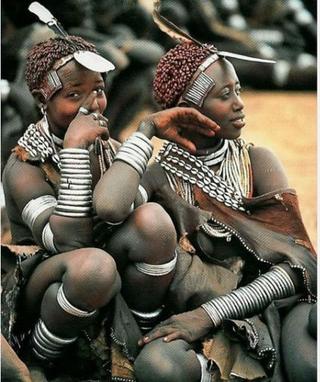Interestingly, the ancestors of Babur Bura together with other tribes like Luguda are believed to be among those who migrated from Yemen.
The origin of the Babur Bura people can be traced back to the 6th century.
History has it that at a point in time there was an exodus of people from Yemen in the Middle East to the Nile valley. And as at A.D.600, these people had not only dispersed, a good number of them had also reached the Sudan and Sahara.
Interestingly, the ancestors of Babur Bura together with other tribes like Luguda are believed to be among those who migrated from Yemen via Sudan through the Chad Basin [Kanem of Borno region] to the present Babur Bura land in Borno and Adamawa state.
Be that as it may, the Babur Bura can also be found in Borno state in the following Local Government Areas: Biu, Hawul, Kwaya kusar, Shani and Bayo while in Adamawa State, they reside mainly in Garkida in Gombi Local Government Area. Famous Babur Bura villages and towns includes Biu, Garkida ,Kwajaffa ,Sakwa, Marama, Shaffa, Wandali, Kida, Miringa, Buratai, Zuwa, Yimirshika ,Hyera ,Dayar, Fumwa, Azare, Gwaski, Diragina, Yimana, Gwallam, Tiraku, Shindiffu, Goski, Pela Birni, Wangdang, Bula taw ewe, Kogu Tashan Alade, Kida, da hang shang etc.
However, each of this places has its own unique history. For example the founder of the present Royal dynasty of Biu is Yamta -ra wala or Yamta the great.
Local tradition asserts that Yamta was the son of a Mandara woman who already carrying him in her womb at the time she was taken into the Mai of Borno’s household. Yamta was brought up as a Kanuri.
READ ALSO: Inside the beautiful palaces of the most influential kings in Nigeria
Yamta established sizeable kingdom for himself in the area bounded by the Gongola and the village of Kopchi, with his first capital at a place called Limbur between Chikorkur and Mandaragrau. Yamta’s grave is still identified at Limbur.
The Babur people are mostly, the inhabitants of Biu and its Immediate environment while the Bura people are the rural inhabitants of the Babur Bura land.
Marriage
Bura has a way of marriage policy when a female child is born, a suitor may propose by throwing a leafy branch of a certain tree into the mother’s hut. If he is accepted, he gives gifts as the girl grows up.
He works on her father’s farm and makes Zana matting for them when she reaches marriageable age, he organizes his friends to capture her and bring her to his house.
Then the remaining part of the bride price is settled, which is not a insists amount and arrangements for the marriage ceremony are concluded.
Also, some of the things that are normally given in the ceremony include kolanuts, salt, and a white linen.
The bride is usually expected to produce a white cloth stained with the proof of her virginity and it may be displayed with pride. Her parents will be ashamed if she is not a virgin.
However, as a sign of respect, a man does not eat with his parents-in-law.
Belief
Before the introduction of Islam and Christainity in the 1920’s, the Bura had their traditional religion known as Hyel or Hyel- taku.
The gods are represented by various objects such as water, stones, mountains or forests. And most sacrifices to gods are made on Saturday, so it is a special day, the chief priest is called Mythmaker Haptu
Language
The Babur Bura language is linguistically classified as Afro-Asiatic, Chadic and Biu-Mandara. The Bura language has great affinity and similarity with Chibok, Marghi, Higgi , Kilba and Bazza.
The Babur Bura people are found in large numbers in Borno, Adamawa, Gombe and Yobe States.

